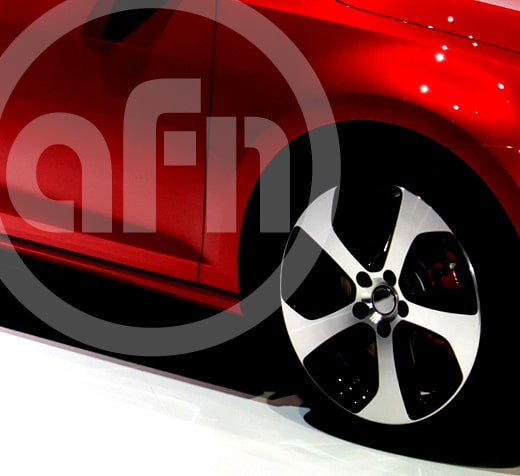Lenders Face Huge Losses From the Glut of Gas Guzzlers
Auto financiers are bracing for higher losses — and there’s little they can do about it.
High-priced fuel has all but dried up the sale of sport-utility vehicles and light-duty trucks, causing resale values to tank. In some cases, borrowers are simply turning in their vehicles’ keys because they can no longer afford the monthly payments.
The glut of gas guzzlers “has ruined the year for us,” said David Pallin, a senior vice president at Massachusetts-based Brookline Bank. “There’s no market for SUVs and trucks.”
Lenders are racking up increased losses of $5,000, $6,000, and $7,000 on these vehicles. “If we were losing $8,000 on a Suburban before, we might be losing $12,000 now,” said Chuck Smith, senior vice president of lending at San Antonio Federal Credit Union. “It’s supply and demand.”
Auction values have taken a “precipitous drop,” said Chuck Noel, risk manager of indirect lending at Birmingham, Ala.-based Compass Bank. “Volumes are dropping so quickly, I don’t think the auction guides are keeping up.”
The worst part, Noel added: “ I don’t see anything there that’s going to change in the near future.”
To Pallin, at least, the writing on the wall went unheeded. “The primary problem is that the U.S. ignored all warnings about the price of fuel,” and now lenders are facing the consequences. Compounding the problem is that some financial institutions are “still paying for the aggressive underwriting in 2006 and 2007,” he added.
Might some banks consider exiting the auto finance space? Though the answer depends largely on senior management and its appetite for risk, there are few lines of business that offer attractive returns right now.
Contrary to the dynamic in the mortgage market, subprime lenders may be better positioned to weather the current auto finance storm. While SUVs and pickup trucks may comprise 50% of a prime lender’s portfolio, the ratio is lower at companies like AmeriCredit Corp., whose portfolio is largely subprime. About 15% to 18% of Fort Worth, Texas-based AmeriCredit’s portfolio consists of gas guzzlers, said spokeswoman Deborah Vestal.
“For our demographic — subprime — the compact car is the more economical choice,” Vestal said.
MITIGATING LOSSES
Some lenders have begun to hammer out loan workouts with borrowers, similar to foreclosure-prevention measures offered in the mortgage sector. Compass, for one, is currently mulling strategies — including reduced payments, extended loan terms, and lower interest rates — meant to keep customers in their cars. The bank hopes to implement the new guidelines in the next month or so, Noel said, noting that “time is of the essence.”
But workouts are only minimally effective at helping lenders avoid repossession. “If the borrower spent all weekend with their wife [deciding to turn in the vehicle], it’s sometimes hard to talk them into keeping it,” Noel said.
Besides, “if someone has lost his job, even if you cut the payment in half or cut it by two thirds, it’s not going to help,” he added.
At Brookline Bank, workouts are very rare, Pallin said.
San Antonio Federal Credit Union has taken a slightly different approach, aiming to minimize losses by selling some vehicles directly to consumers every Friday. “There may be four or five trucks we think we could get a couple thousand [dollars] more on,” Smith said. “We sell quite a few that way.”
Other lenders recently have opted to hang onto repossessed or off-lease vehicles until the market stabilizes. “Some sellers are just parking them on our lots,” said Tom Kontos, executive vice president of customer strategies and analytics for auction company Adesa Inc.
Both Compass and Brookline Bank choose to remarket vehicles immediately, though. “We don’t want to hold a lot of inventory,” Noel said. “The auction sales will be what they’re going to be.”
Besides, there’s no guarantee that a delay in remarketing will yield higher returns. “You can’t wait it out,” Pallin said, adding that nobody knows where auction pricing is headed.
A WAITING GAME
Essentially, financiers have spliced their portfolios into two segments: new and existing originations. Though options are slim for improving performance on the existing portfolio, lenders are working to control their new books of business.
Compass Bank continues to underwrite loans using existing guidelines, but it has reduced use of exceptions. “Earlier, we had latitude on loan-to-value or on scorecards,” Noel said. “Now we don’t.”
Other lenders have beefed up scrutiny of borrower characteristics like occupation, considering whether the job is one that may face downsizing in the near term, and of loan-to-value and payment-to-income ratios.
And in terms of portfolio composition, the product mix “has taken care of limiting itself,” Noel said. “If we were one-third large SUVs and trucks before, we’re 10% or less now.”
Still, there is some demand — albeit minimal — for gas guzzlers. “People are still buying trucks,” Smith said, but those applications are “way, way, way down.”
For the most part, buyers of SUVs and pickups are consumers with strong credit profiles for whom $4- or $5-per-gallon gas is an “inconvenience, not an insurmountable hurdle,” Noel said.
Meanwhile, loan volume for cars, especially compacts, is up across the board. “Dealers can’t keep [Ford] Focuses on the lot,” Smith said. “Camrys, Civics, Corollas, Priuses — people are standing in line with their checkbooks for those.”















